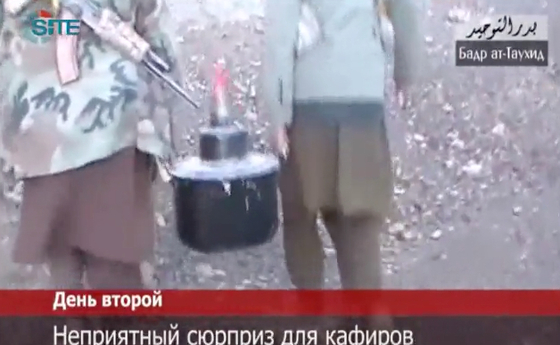The Taliban were responsible for downing a US Army Blackhawk helicopter in the southern Afghan province of Zabul on Dec. 17, 2013, the International Security Assistance Force has confirmed. The helicopter may have been brought down by an anti-helicopter mine such as one tested by the Islamic Jihad Union, an al Qaeda-linked group known to operate in the province.
When the helicopter crashed on Dec. 17, ISAF said that "initial reporting indicates there was no enemy activity in the area at the time of the crash." The Taliban immediately claimed credit for the attack on their website, Voice of Jihad, however, stating that "Mujahideen of Islamic Emirate have shot down the helicopter of foreign troops." [See Threat Matrix report, Taliban claim credit for ISAF helo crash in Afghan south.]
Two days ago, ISAF told CNN that "the families of the soldiers killed in the December 17 helicopter crash have been notified that 'enemy action caused the crash and loss of life,'" Stars and Stripes reported. Five US soldiers from the 1st Infantry Division and another from the 2nd Cavalry Regiment were killed in the Taliban attack.
The exact cause of the downing of the helicopter has not been disclosed. Three US military officials told CNN that "the Taliban has been deemed responsible -- either by shooting the helicopter or if the low-flying aircraft set off a bomb hidden on the ground."
In the past, the Taliban have successfully shot down US helicopters with rocket-propelled grenades. The most significant shootdown took place in August 2011 in the Tangi Valley in Wardak province. Taliban RPGs struck a US Army Chinook that was involved in a raid to capture a senior Taliban commander; the attack resulted in the deaths of 38 US and Afghan troops, including 17 Navy SEALs from SEAL Team 6.
While Taliban-fired RPGs have been credited with downing ISAF helicopters, jihadists in Afghanistan have also advertised the testing of what they described as an "anti-helicopter fragmentation mine" designed to take out US Army Apache attack helicopters. In July 2013, the IJU, an offshoot of the Islamic Movement of Uzbekistan, displayed one such weapon in a video about its operations in Paktika province. [See LWJ report, Islamic Jihad Union fighters attack US base, plant 'anti-helicopter' mine.] The IMU and al Qaeda are known to operate in Zabul; members often serve as embedded military trainers to Taliban forces. [See LWJ report, Al Qaeda's paramilitary 'Shadow Army'.]
In one scene of the IJU video, the jihadist fighters are shown carrying what the SITE Intelligence Group described as "the prototype for an anti-helicopter fragmentation mine."
"The mine can hit a target at a distance of 300 meters," the IJU video states. The cameraman describes the anti-helicopter fragmentation mine as an "unpleasant surprise" for the US helicopter crews. The IJU narrator indicates, however, that the mine was not fired.
If the Dec. 17, 2013 helicopter crash is determined to have been caused by an anti-helicopter fragmentation mine, it would be the first successful attack of its kind reported in Afghanistan. It would also indicate that ISAF forces, which are relying more on helicopters for support as Western forces continue to draw down, face a new threat from the Taliban and allied groups in Afghanistan.
IJU anti-helicopter fragmentation mine from its July 2013 video:
